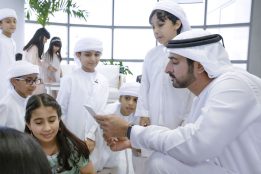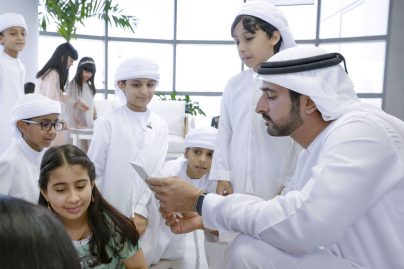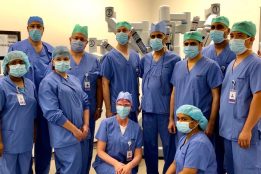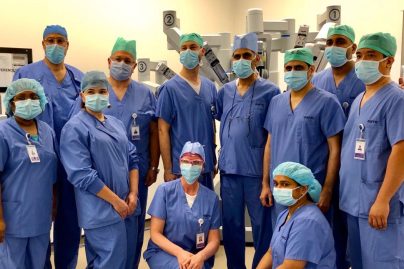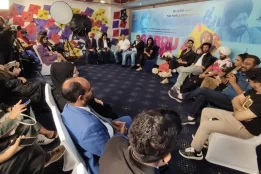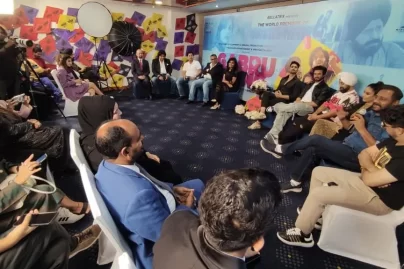After Mars, UAE sets course for Planet Venus!
Tue 05 Oct 2021
DUBAI: The United Arab Emirates Space Agency announced the commencement of a new Emirati interplanetary mission, designed to further accelerate the young nation’s space engineering, scientific research, and exploration capabilities and drive innovation and opportunity in the country’s private sector.
“We have set our eyes to the stars because our journey to development and progress has no boundaries, no borders, and no limitations. Today we are investing in the generations to come,” said Sheikh Mohammed bin Rashid Al Maktoum, Vice President and Prime Minister of the United Arab Emirates and Ruler of Dubai. “With each new advancement we make in space, we create opportunities for young people here on earth.”
Built on the knowledge and experience gained from the Emirates Mars Mission (EMM), the new mission will involve significant participation from Emirati private sector companies. It is scheduled for launch in 2028, with the primary goal of exploring the asteroid belt between Mars and Jupiter, the source of most meteorites that impact the earth.
Mohamed Bin Zayed Al Nahyan, Crown Prince of Abu Dhabi and Deputy Supreme Commander of the United Arab Emirates Armed Forces, said: “This new mission tests and extends the capabilities of Emirati youth in achieving Zayed’s ambition to explore space. We are certain that our talented local engineers, academic and research institutions, which have so far made quantum leaps in developing our space sector, are well equipped to take on this daring new challenge.”
The spacecraft will undertake a 3.6 billion-kilometre, five-year journey, which will see it perform a gravity assist manoeuvres by orbiting first Venus, then Earth in order to build the velocity required in order to reach the main asteroid belt, located beyond Mars. Its trajectory around Venus will see it reaching solar proximity of 109 million kilometres, requiring substantial thermal protection and the furthest distance from the sun of 448 million kilometres, requiring high levels of insulation and spacecraft operation with minimal levels of available solar energy.
Through its journey, it will study seven main-belt asteroids. It will be built using the substantial heritage and intellectual property (IP) acquired during the development of the Emirates Mars Mission and its Hope Probe, currently orbiting Mars and gathering unique data on Mars’ atmospheric composition and interactions.
Sarah Al Amiri, Chair of the UAE Space Agency, said: “Our goal is clear: to accelerate the development of innovation and knowledge-based enterprises in the Emirates. This can’t be done by going steady-state, this requires leaps in imagination, in faith, and the pursuit of goals that go beyond prudent or methodical. When we embarked on the Emirates Mars Mission, we took on a six-year task that was in the order of five times more complex than the earth observation satellites we were developing. This mission is in the order of five times more complex than EMM.”
The mission will make its first close planetary approach orbiting Venus in mid-2028, followed by a close orbit of Earth in mid-2029. It will make its first fly-by of a main asteroid belt object in 2030, going on to observe a total of seven main-belt asteroids before its final landing on an asteroid 560 million kilometres from Earth in 2033. This will make the Emirates the fourth nation to land a spacecraft on an asteroid.
The mission brings extensive challenges that go beyond EMM in terms of spacecraft design and engineering, interplanetary navigation, and complex systems integration, requiring new levels of performance from its communications, power, and propulsion systems as well as demanding intensive mission control. The precise science goals and instrumentation to be deployed on the mission are to be announced in mid-2022.
The mission is to be developed in partnership with the Laboratory for Atmospheric and Space Physics (LASP) at the University of Colorado, Boulder. LASP was the primary knowledge transfer partner for EMM, bringing over seventy years of experience in spacecraft and instrumentation design and development and helping advise, train and develop the team of Emirati engineers, software developers, and scientists who worked on EMM, many of whom will go on to work on this new mission.
Hasan Al Hariri, CEO of Dubai Astronomy Group expressed his enthusiasm and said, “I would salute the UAE program space initiative as the two selected objectives are very important. Starting with Venus, which is the closest planet to Earth as well as is the mystery planet as it is shadowed with a thick atmosphere. It is 100 times thicker than the Earth.”
He added that there are reports by researchers that suggest that there are gasses in the atmosphere of Venus indicating the existence of life on the planet. This he described is peculiar and that other space agencies have also started to send probes to study the planet.
He explained UAE’s interest in Venus relates to the search for life and for opportunities for scientific discovery. “This is very critical in the study of space research and so planet Venus is coming back to the limelight globally and UAE is a part of the armada to explore it as well as its potential for scientific discoveries in the near future,” Al Hariri said.
He stated that when it came to the asteroids, their study is important for us for several reasons. The asteroids have immense mining potential in terms of the wealth of minerals and rare materials that come from them. These resources could be used to build space colonies as well as support Earth.
Hariri said that another reason to study asteroids is that they could hit Earth somewhere in the future. So by exploring and understanding helps in deflection and to save Earth. He elaborated that the study of the asteroid belts could also help with refueling in the event of interplanetary missions in the future.
He added that there is potential to perhaps build colonies on asteroids as we would build colonies on the Moon. With this, we would be able to fuel from space rather than Earth which is important in the journey further into the solar system or the interstellar level or new studies into stars.
“I would like to salute the UAE Space Agency for this as they are paving the road for going to the stars,” Hariri expressed with pride.
He emphasised that these are necessary steps for the futuristic goals we have for our space program and that the Dubai Astronomy Group supports the initiative completely.
Hariri also announced that they would be observing planet Venus in the coming days as well as invited the public to join the Dubai Astronomy Group. They would also be having, talks about planet Venus as well as recent discoveries, workshops, and training courses about the minor objects and asteroids.
Five initiatives are being launched around the new mission by the UAE Space Agency to accelerate the development of the UAE’s space sector:
A fully funded program to establish Emirati space sector businesses.
Priority access to contracts and procurement for the mission by Emirati companies.
A vocational training program to train young Emiratis on component assembly and space subsystems engineering.
A program to bring local and international universities and research centres together to work on the mission, including LASP and Emirates University.
Source: Supplied

 Apr 27 2024
Apr 27 2024
